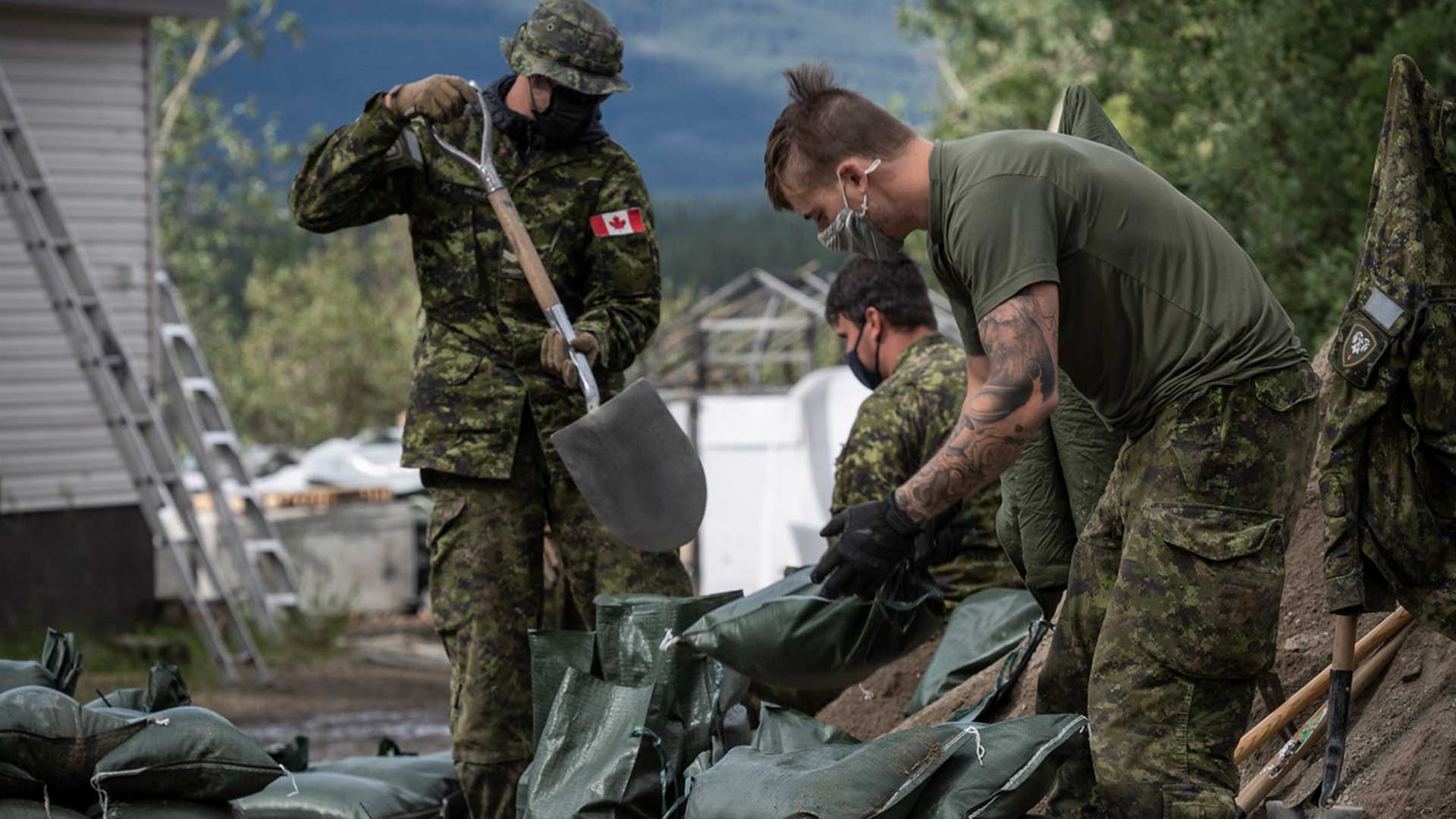Hot weather isn’t something Brandon Kyikavichik is used to.
Kyikavichik is from the Vuntut Gwitchin First Nation in Old Crow, Yukon, which is the territory’s northernmost community, as well as the only Yukon community above the Arctic Circle.
According to Environment Canada, the average high for Old Crow around this time of year is around 20 C.
“Every once in awhile it gets up to maybe 25 C, so even that is pretty hot for us,” he tells APTN News.
But on July 20, Environment Canada issued a heat warning for the community as temperatures soared above 29 C, beating the 28.5 C record in 2002.
“It was pretty hot for this far in the Arctic…which many of us aren’t used to,” he says.
“That level of heat, you know, it’s quite uncomfortable for me.”
Kyikavichik says Old Crow has been dealing with extremely dry weather this summer. He notes water levels of a local river are so low you can walk across it and the air is smoky.
“We have our (forest fire) warning because everything is dry, dry, dry and we’re sitting in a tinder box right now,” he says.
While temperatures have since cooled down, Kyikavichik says Old Crow is at the forefront of climate change and weather there has become unpredictable.
He says summers and winters are getting warmer, and in recent years the month of May has become “really strange.”
“Typically it’s sunny and nice in May… but now weather is erratic with rain, snow, hot weather, back to windy, rainy and snowy, all that,” he says.

Our Clean Future, Yukon’s government’s strategy to fight climate change which was released last year, states, “Since 1948, temperatures in northern Canada have increased by 2.3 degrees Celsius, with temperature rise being most rapid in Yukon and the Northwest Territories.”
It notes Yukon has experienced and will continue to experience more frequent and extreme weather events like flooding, severe forest fires and glacier melts which are “affecting river flow patterns.”
Kyikavichik says it’s hurting the land.
“Rivers eroding the way they’re eroding, landslides right across the river. Lakes draining and stuff, these changes are supposed to happen over geologic time…we’re not supposed to see these changes in our lifetime.”
Historical floods
Erratic weather has also caused major flooding in southern Yukon.
Holly Goulding is a senior hydrologist for Yukon government.
She says a record snowfall last winter followed by a cool spring delayed snowmelt. This, along with a heatwave in late June caused snow packs to melt at an alarming rate, causing major flooding in the Southern Lakes region and Lake Laberge south of Whitehorse.
“These conditions alone caused the snow to melt quickly, resulting in rapidly rising water levels that reached record setting levels in the Southern Lakes. It happened much earlier than is typical in the system,” she says.
Goulding notes the flooding has surpassed Yukon’s 2007 flood of record by four to 14 cm in the Southern Lakes region and 35 cm in Lake Laberge.
“This is actually the highest water levels that have ever been seen on the system,” she says.
Mark Hill is the flood liaison between Yukon’s Incident Management Team (IMT) and the Emergency Measures Organization (EMO).
He says the IMT “has grown into largest flood mitigation team in Yukon’s history,” involving 200 personal, 1200 pieces of equipment and six sand bagging machines.
Since June, flood response teams have filled 280,000 sandbags in the Southern Lakes region and Lake Laberge, with more bags filled by volunteers.
He says three platoons of 26 individuals from the Canadian Armed Forces as well as technical overhead have also been brought in to help build berms and protect critical infrastructure. A government press release states volunteer coordination resources will arrive in Yukon this week and will assist in adding more structure to the local volunteer response.
Evacuation alerts remain in effect for some affected flooding areas, and there is an evacuation order for one property in Lake Laberge. Hill says while some people under evacuation orders have left their home, in most cases where there’s only alerts it’s not necessary to do so.
As for damages to homes, Hill says approximately 186 homes have been affected.
“What we’re seeing mostly is groundwater seepage, there’s issues with private wells, so there’s a boil water advisory in most areas that are affected by flooding. Some people are having trouble with septic fields, and some people are having water damage to their basements, that type of thing,” he says.
“We are working with homeowners to make sure that groundwater is being pumped out hourly.”
Is climate change the culprit?
While Goulding couldn’t say the floods were directly linked to climate change, she did note they were “influenced by extreme weather runs.”
“Climate change studies promote both a warmer and wetter climate for Yukon and also an increase in extreme events. That’s kind of what we have seen through this event,” she says.
“We should be expecting larger snowfalls in Yukon, more precipitation overall and more extreme events like the heatwave we experienced in late June. These kinds of events will affect the water levels that we experience throughout the year.”
Water levels are now slowly dropping in the Southern Lakes region and have stabilized in Lake Leberge.
Goulding says Yukon’s current dry period has been favorable for limiting precipitation, but rainfall expected in mid-August could cause water levels to rise again.
“In addition above normal temperatures could promote more glacial melts and that again contributes to pushing water levels higher,” she says.
However, Hill says berms are being built to the expected highest water level and he’s confident additional flood damage can be mitigated.









